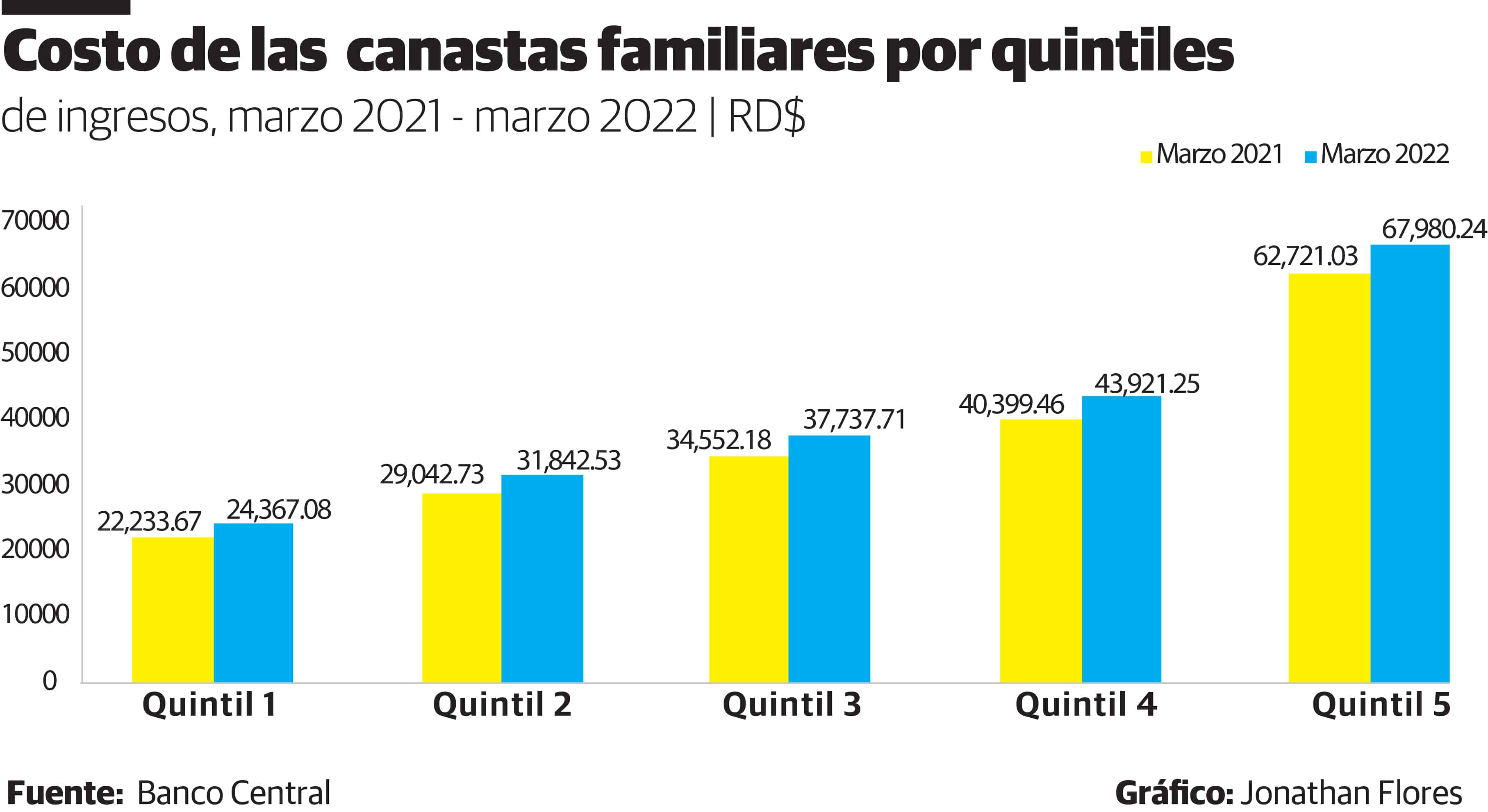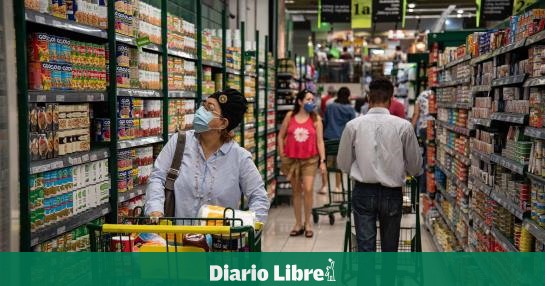The households with the lowest economic income were those that felt a inflation highest in March, according to data published by the central bankwhich attributes it to increases in the prices of food, fuel, ground transportation and personal care services, and meals prepared outside the home.
On a year-on-year basis, when in March of last year the poorest families covered the family basket with 22,233.67 pesos on average, last March they had to do it with 24,367.08 pesos, for an increase of 9.60%.
And households in the second poorest quintile covered their family basket with 29,042.73 pesos a year ago, but last March they did it with 31,842.53, for an increase of 9.64%.
The average salary of formal workers registered in the Social Security Treasury was 28,503.9 pesos in February, being 2,507 pesos more than in the same month last year.
The family basket It includes various items ranging from food, clothing, medicines, medical consultations, transportation, household appliances and education, among others.
The central bank divides Dominican households into five quintiles and estimates their basket. Quintile one represents the 20% of households with the lowest income level and quintile five is made up of the 20% with the highest purchasing power. The first three quintiles had a inflation of 0.83%, 0.81% and 0.75%, respectively in March.
The last two quintiles with the highest income registered rates of inflation of 0.58% and 0.56%, respectively, due largely to the rise in prices of food, fuel, air tickets and vehicle insurance, explains the central bank.
On a year-on-year basis, when a family in the fourth quintile covered their family basket with 40,399.46 pesos on average in March 2021, a year later it had to do so with 43,921.25 pesos, for an increase of 8.72%. And those of the fifth quintile did so with 62,721.03 pesos and a year later it rose to 67,980.24 pesos, for an increase of 8.39%.

How was February?
A month earlier, in February, the inflation per quintile had differences. It was 0.82% in quintile 1, 0.90% in quintile 2 and 0.92% in quintile 3. The central bank He attributes it mainly to the same variables that had an impact in March: increases in the price of food, fuel, ground transportation and personal care services, and meals prepared outside the home.
The highest income quintiles recorded rates of inflation higher than in March: 0.91% (quintile 4) and 0.96% (quintile 5), also largely due to the rise in prices of fuel, automobiles and airfares within the Transportation group.
What do Dominican households spend money on?
Dominican households spend 21.1% of their income on food and non-alcoholic beverages, this being the highest percentage.
In second place is transportation, with 14.8%, followed by accommodation, water, electricity, gas and other fuels, with 12%, according to the latest National Survey of Household Income and Expenses (Engih) 2018, carried out by the central bank.
In descending order, they are followed by restaurants and hotels; miscellaneous goods and services; Health; furniture, articles for the home and for the ordinary maintenance of the home; communications; education; clothing and footwear; recreation and culture, and alcoholic beverages, tobacco and narcotics.
Prices continue to be influenced by external factors
In his latest report on the inflationcorresponding to March, the central bank He explained that the dynamics of domestic prices continue to reflect external inflationary pressures that are more persistent than expected, which have been exacerbated by the Russia-Ukraine military conflict, causing additional increases in the prices of inputs and primary goods.
At a general level, the price index of the Food and Non-Alcoholic Beverages group, registering an increase of 1.18%, was the one with the highest incidence in the March Consumer Price Index, mainly explained by the price increases of fresh chicken (3.13 %), avocados (12.41%), green pigeon peas (12.34%) and pork (2.84%).
Also, peppers (4.69%), cassava (3.22%), soybean oil (1.28%), purified water (0.90%), evaporated milk (2.50%), green bananas (2.05%), beef (1.05%) , liquid milk (1.17%), rice (0.31%) and salami (0.71%).
In addition, potatoes (2.47%) and white cheese (1.54%), while other food goods registered decreases in prices such as eggs (-1.33%), onions (-2.52%) and garlic (-2.58%).








